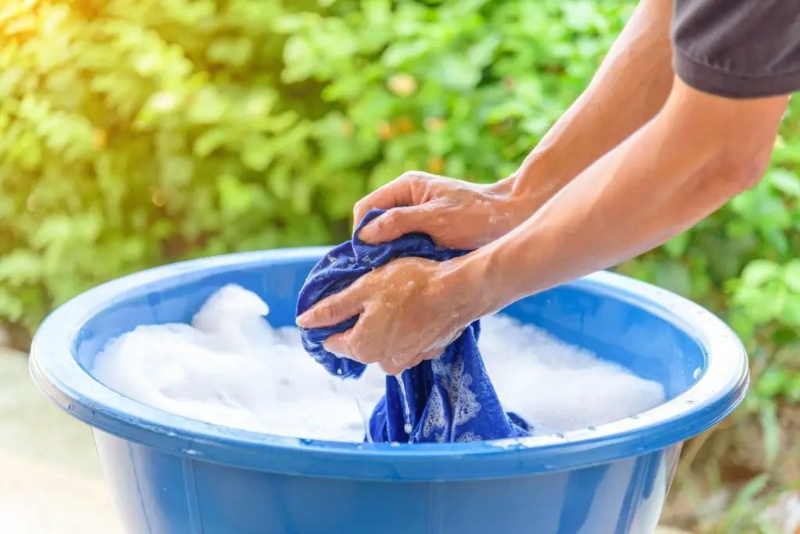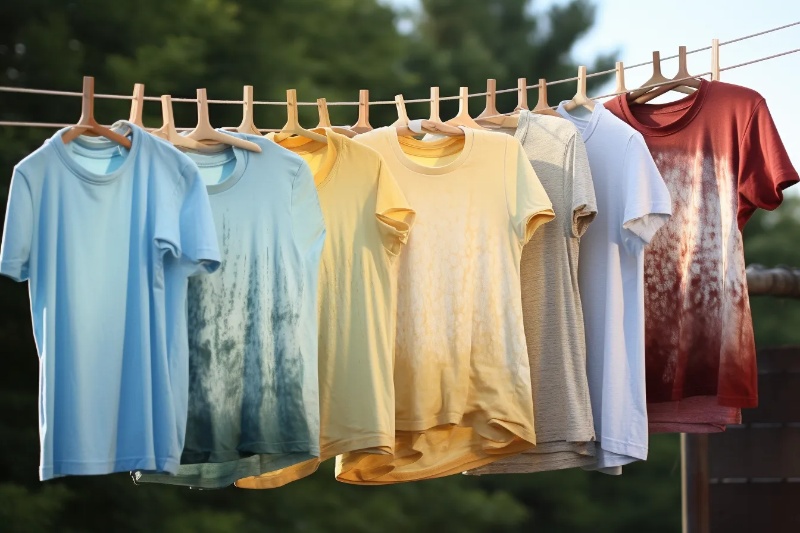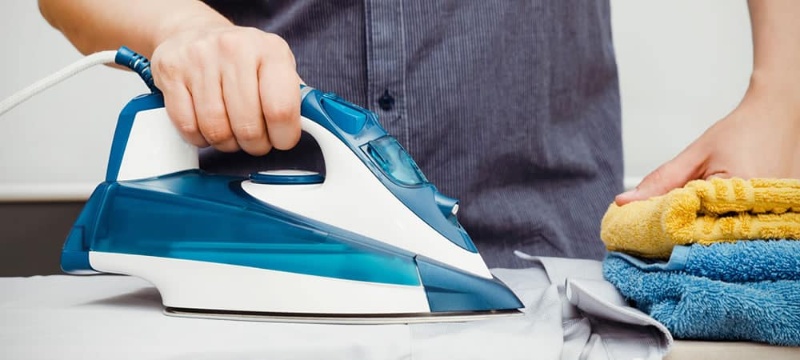Contents
Screen printing is one of the oldest and most popular t-shirt printing methods in the world. It is likely that you have at least one t-shirt made with screen printing.
Compared to other new and modern printing techniques, screen prints are more delicate, requiring extra attention to take care of. If you want to keep your T-shirt last long, it is important to learn how to wash screen printed shirts and dry them properly.
In this blog post, Merchize will go through everything about screen-printed T-shirt care instructions.
How to wash screen-printed shirts without cracking them?
To make clothes last longer and keep their integrity, a proper laundry process is a must. Washing your T-shirt the right way will help to retain the fabric quality as well as prints, especially for screen printed shirts.
If you want an easy option- t-shirts that are highly durable and can hold up better, you can consider trying other T-shirt options – like sublimation printed shirts or digital printed shirts.
>>> Read more: Best Types of T-shirt Printing To Make Perfect T-shirts With
While it is possible to wash screen-printed shirts by hand and by the washing machine, it is better to handwash for a less destructive washing process. But don’t worry if you have no time to handwash all your shirts, just follow our guidelines to learn the best tips to make sure your shirts are safe after machine washing.
How to wash a screen-printed shirt in a washing machine?
Washing your screen-printed shirts in a washing machine is super convenient. If Follow these steps for optimal results:
Step 1: Sort your T-shirts
Before throwing your T-shirt into the washing machine, you must sort your clothes based on their colors, (dark, white, and colored clothes, for example) and wash them separately. This preparation step is meant to prevent color bleeding during the laundry.
In addition, you should also pay attention to the material and weight. You might also want to separate natural fiber clothes from polyester fiber clothes, as different fibers might require different treatments.
Heavy fabrics like jeans, khaki, or towels can aggravate the fabrics.
Step 2: Wash your T-shirts inside out
Another useful tip is to turn your shirts inside out before putting them into the washing machine. The outside of the T-shirts usually bears exposure to heat, sunlight, and other factors, which is unavoidable. However, during the washing process, you can limit the possible damage to the outside of your T-shirt by turning it inside out. This way, you can avoid rubbing the print against other garments and causing pilling on the fabrics.
Step 3: Pre-treat areas with a stain remover spray
If you spot a hard-to-remove stain on your shirts, instead of proceeding to put your clothes into the washer and use extra detergent, you should pretreat the clothes with a stain remover spray beforehand.
Harsh detergent can affect the quality of the fabric. So it is recommended to only apply the stain remover spray on the area that needs to be cleaned.
After that, gently rub the fabric against itself to remove the stains. Using a brush is not recommended in this case as it could be too abrasive.
Step 4: Use cold water
Heat can cause some irreversible damage to your clothing. Whether your shirt is made of polyester blend or cotton, hot water can make your clothes shrink significantly. In addition, hot water also makes it quicker for the fabric to lose its color or cause the print to fade or crack.
Step 5: Set your washing machine to gentle cycle
To minimize the possible damage to the fabric, it is recommended to set your washing machine to a gentle cycle. A slow spin will help to gently wash your clothes and avoid stretching the fabric and causing print peeling or cracking.
Step 6: Use mild detergent
For colored clothes, to keep the fabric color and prints from fading, you should use mild color-safe detergent.
How to wash a screen-printed shirt by hand?
To keep your T-shirt in the best condition, washing your screen-printed T-shirt by hand is highly recommended. We will give you the full instructions on how to wash your shirts by hand:
Similar to doing laundry with a washing machine, you should also sort your T-shirts based on colors, materials, and weight and turn them inside out.
Step 1: Fill the basin/tub/sink with cool water.
Add mild detergent and agitate it into the water
Hot water can damage the prints and cause the fabric to shrink. To keep your screen-printed T-shirt intact, only use cool or cold water for washing. Also, you should avoid harsh and abrasive detergent, whether you are washing by hand or washing machine.
Step 2: Soak your clothes in the water
At this step, you can put your clothes into the basin and let the water sink in. Let it sit for 10 minutes or more for the detergent to dissolve the stain and dust.
Step 3: Agitate the clothes gently
For this step, you can agitate the clothes gently. Avoid scrubbing or rubbing the print because it can damage the prints, and cause print cracking or peeling.
Step 4: Rinse the clothes with clean and cold water
Empty the basin and refill it with clean water. Keep rinsing the clothes and repeat until all the detergent is washed away.
Step 5: Squeeze the clothes
Once you get rid of all the detergents, you can squeeze the clothes to get rid of all the excess water.
Wring your T-shirt as gently as possible as it can cause damage to the print.
Step 6: Air dry the clothes
Last but not least, in order to make sure that your clothes won’t be exposed to high heat, always air dry them. Dryers can make it faster to dry garments but the drying process will demand high heat which can cause irreversible damage to the prints and the fabrics of your clothes.
To make sure that your clothes keep their form afterward, consider using a rounded hanger to hang them up.
Besides, avoid air drying the clothes directly under the sunlight. Excessive sunlight can cause the fabrics to quickly lose their colors and the prints to be distorted and peeled easily.
How to dry screen printed shirts?
After washing, drying is also equally important for keeping the quality of your screen-printed shirts. For drying, there are two main options, air drying and machine drying (washer or dryer).
Air drying
Air drying would take more time, but it is properly a safer option compared to using a dryer. The process is simple: Smooth wrinkles, and hang your screen-printed shirts on wire hangers, clothespins, and bring them out.
Remember to turn the shirt inside out and avoid putting your clothes under direct sunlight. Prolonged exposure to the sun can cause fading and print cracking.
Washin machine/Dryer
Machine drying is super convenient for drying clothes. To avoid the damage caused by excessive use of heat, you should:
- Sort your clothes by colors, weights, and textures
- Turn the screen-printed shirts inside out before putting them into the dryer
- Use the lowest heat setting or Permanent Press to avoid causing shrinkage or print cracking.
How to remove wrinkles from screen-printed shirts?
To get your clothes ready to wear, you must make sure it is wrinkle-free, especially if your clothes are made of prone-to-wrinkle materials like cotton. You can either iron or steam your clothes to get rid of wrinkles and keep them ready for wearing.
Ironing
- Turn your t-shirt inside out and flat it out on an ironing board
- Set your iron’s temperature to the lowest setting
- Use a towel to layer above your T-shirt
- Iron the t-shirt from above the towel. Continue to reposition the t-shirt as you work through your t-shirt
Steaming
- Turn your t-shirt inside out and hang it up with a hanger
- Turn on your handheld steamer, set it to the lowest temperature
- Move the steamer across the fabric to remove wrinkles. Avoid steaming directly into the print. Instead, work around the printed area or steam sparingly
How to cure a screen-printed shirt?
After screen printing a shirt, it is necessary to cure the print to ensure the ink will adhere to the fabric properly and last for a long time.
During the process of curing, heat will be applied to set the ink and make it stick to the garment. If you are making screen-printed shirts, here are the curing steps that you can follow to keep your print stay longer:
Step 1: Prepare your shirt
Before curing, make sure that your screen-printed shirts are completely dry and free from excess ink. The shirt should be clean and free of wrinkles.
Step 2: Prepare heat source
In a professional screen printing facility, they will have special equipment like conveyor dryers or heat presses specifically designed for curing prints. These devices are faster and more convenient to use.
However, don’t worry if you don’t have access to this equipment at home. You can use regular home appliances that emit heat like an iron, oven, or hair dryer to cure the print on your shirt.
Step 3: Add a protective layer
Before applying heat, you must place a piece of parchment paper or silicon coat sheet to cover your screen-printed design. This way, you can avoid the heat being applied directly to the ink, which might cause damage to the print and fabric.
Step 4: Apply a heat source
After adding a protective layer, it’s time to place your T-shirt to your heat source. Make sure to flat out your shirt beforehand.
If you are using a heat press or conveyor dryer, make sure to follow the recommendation given by the manufacturer. The setting requirement might differ depending on the ink type and fabric of your T-shirt. For this step, make sure to check the manufacturer’s manual for guidance.
If you are trying to cure your screen-printed T-shirt from home without the help of specialized equipment, you can do as per the following instructions for your curing process:
Iron
Iron is an easily accessible option for curing screen-printed T-shirts. While it is not as efficient as other special tools like heat presses or conveyor dryers, iron is the most viable and safe DIY option for you. Depending on the ink type, the curing process might vary accordingly:
For plastisol ink, you might need to ‘gel’ the ink before adding the protective layer. In order to gel the ink, you must hover the iron above the ink to bring the ink to a semi-dried state. Make sure not to get the iron in contact with the semi-dried ink.
For water-based inks, you can skip the gelling part and proceed with the curing process.
To cure the ink, you can iron over the design for a minute or two. Set the iron somewhere between 320°F to 350°F (160°C to 175°C). Move the iron across the design to make sure the heat is distributed evenly. You should repeat the process until the ink reaches the right curing temperature. Along the process, use a heat gun to regulate the temperature.
Oven
Using an oven for curing is not recommended. You might risk running the shirt if you don’t know how to do it properly. The issue with an oven is that it doesn’t provide a consistent source of heat across the surface, which can affect the curing result.
Not to mention that in some cases, the heat might cause some chemical reaction to the T-shirt ink, which can release harmful chemicals in your oven. It can make it unsafe for baking and broiling food in the same oven.
However, if it is your only option and you don’t intend to be mass-producing in bulk, here’s what you need to do:
- Place your screen-printed t-shirt on the oven’s tray. Make sure to place the T-shirt in the center of the oven. Set your oven to the right temperature. Don’t forget to keep an eye on your garment so as to not let it char or burn.
- Closely monitor the temperature and see if the ink has reached the desired temperature.
- When the ink is cured, you can pull the tray out of the oven and let it cool down naturally.
When the ink has set, you can perform a stretch test to see if it has been cured properly. If you see the ink breaking apart, especially the plastisol ink, you should put it back in the oven for a second round.
Hairdryer
Just like the oven, a hairdryer is not the best option for DIY screen printing curing. It is hard to distribute heat evenly with a hairdryer. Plus, the heat provided by a hairdryer is not high enough to cure the plastisol ink. But for water-based ink, it is somewhat doable. However, it might take a long time to build up the heat and reach the desired temperature.
You should also consider that using a hairdryer can cause ink bleeding, which is the result of rapid air blowing. If you want to cure a large quantity of T-shirts, using a hairdryer for curing is not recommended.
If you’re using an iron, set it to the appropriate temperature. A cotton setting, typically between is a good starting point.
Step 5: Cool down
After curing the screen-printed T-shirt, you now can remove the shirt from the heat source and let it cool down naturally. This step will allow the ink to set and bond with the fabric, which will keep the print last longer.
To make sure that the T-shirt is safe for washing, you should inspect the cured designs one more time for any signs of irregularities.
Proper curing will ensure the prints on your T-shirt last longer, and prevent ink from cracking and fading over time.
How many washes do screen-printed shirts last?
The answer can vary widely depending on different factors, including:
- Printing quality: High-quality print can surely last longer than poorly printed T-shirts. The quality of printing relies on factors like ink quality, printing technique, printers, and printing procedure.
- Fabric type and quality: The higher the fabric quality, the longer it lasts. Besides, different types of fabric can hold up print differently. For example, natural fibers like cotton tend to hold prints better than synthetic fabrics like polyester or poly blends.
- Care and washing: If you don’t take proper care of your garments, even the best quality screen printed shirts couldn’t last long. Always check the care labels and follow the instructions in order to keep your clothes, including screen-printed shirts, in their best condition.
- Frequency of wear: If you wear the shirt frequently, it will naturally experience more wear and tear, which can lead to the print cracking or fading sooner.
In addition to all of the major factors mentioned above, other environmental factors, for example, Exposure to direct sunlight, excessive sweating, or harsh environmental conditions can speed up the deterioration of the print.
Conclusion
Knowing how to wash screen-printed T-shirts properly will save you from the risk of ruining your favorite T-shirt. Following a proper process also helps you to keep your shirts in the best condition for longer. Hope these laundry tips will improve your cloth’s quality and longevity.










